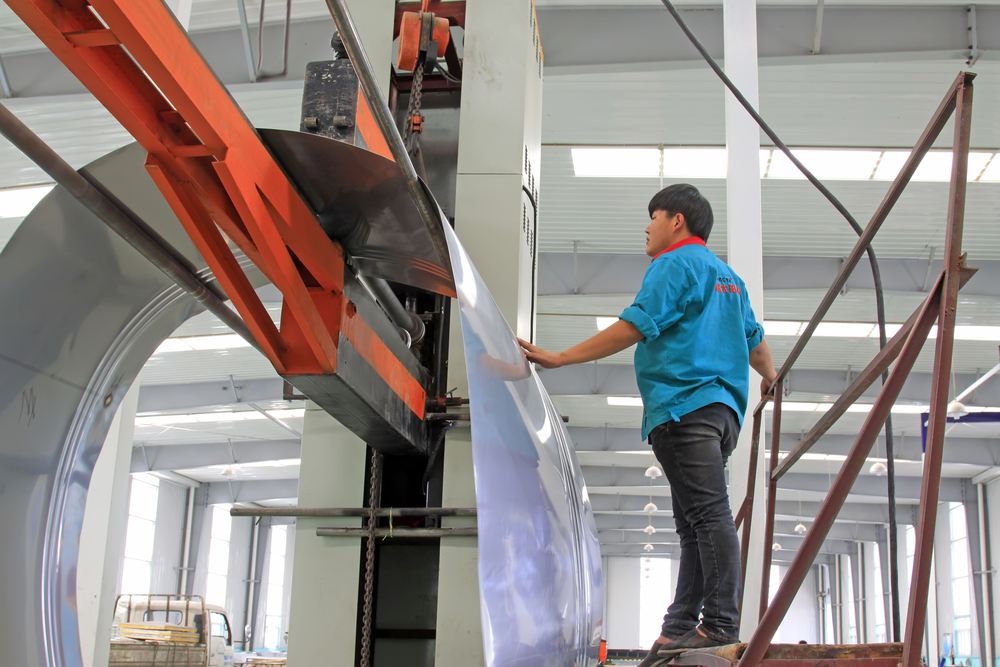The reason — China’s steel mills are favoring higher-quality ore produced by Fortescue Metals Group Ltd.’s competitors, and the Perth-based producer’s rivals insist the shift will be permanent.
Incoming Chief Executive Officer Elizabeth Gaines, who’ll take the job in February after a year as chief financial officer, arrives in the post at a moment of rapid evolution for the company, founder and Chairman Forrest said last month. Here are the key issues Gaines and a slate of new top executives face:
Shifting sector
China’s mills are using better quality raw materials to produce steel with fewer emissions to comply with the nation’s anti-pollution push, and to lift output amid record margins. It’s a change that’s sent prices of some ores tumbling, and seen the discount Fortescue must accept for its lower-quality products widen to an estimated 31 percent in the the final three months of the year, according to UBS Group AG.
Fortescue, which previously had argued the change in China would be short-term, will now aim to deliver more than half of its output with over 60 percent iron content, Forrest said last month. The supplier currently produces iron ore with an average of 58 percent content, compared to an industry benchmark of 62 percent.
“It’s an acknowledgment that the strategy they’ve been pursuing so far is perhaps not sustainable,” Melbourne-based RBC Capital Markets analyst Paul Hissey said by phone. Raising quality may mean higher mining costs, while it could be two years before Fortescue can take advantage of better grade material from a new mine, he said.
The producer’s investment in processing and “blending is critically important to our long-term sustainability and competitiveness as a supplier of raw material to our customers,” outgoing CEO Nev Power said in a statement. Fortescue will continue to refine strategy to “maximize our cash margins regardless of the impact of market volatility,” he said.
Trailing the pack
Perth-based Fortescue, which surged more than 200 percent in 2016 and was the No. 2 performer in the MSCI Asia-Pacific Index, has lagged competitors this year, slumping 17 percent as iron ore prices have retreated and it holds volumes steady.
Profits are forecast to fall more than a third to $1.3 billion in the 12 months to June 30 and continue to decline in the following year, according to the average of 19 analysts’ forecasts compiled by Bloomberg.
Ratings agencies also insist the producer must continue to slash its debt, cut to $2.6 billion in fiscal 2017 from a peak of over $10 billion four years ago, before credit metrics can be lifted to investment-grade status.
Slower China
While Fortescue boosted sales outside China in the half ended June 30, the nation continued to account for 93 percent of revenue. Amid forecasts for slower growth and declining steel output, the company is expanding efforts in other markets including the U.K., Germany and India, Power said last month. Fast-growing parts of Southeast Asia, including Indonesia and Vietnam, are also a key target.
Spending more
Capital expenditure is forecast to rise more than a quarter to $908 million in fiscal 2018, while Fortescue expects to spend as much as $1.5 billion within the next three years to develop a mine and railroads to replace the aging Firetail operation. The producer will take a decision before July on a potential expansion of the separate Iron Bridge joint venture project, estimated in 2013 to have a $1.5 billion development cost.
Lowering production costs, slashed more than 60 percent over the past three years, is becoming harder as Fortescue handles larger volumes of waste rock and longer haul distances. The entire industry faces new pressures from more expensive raw material inputs, coal to manganese producer South32 Ltd. said last month.
What’s next?
Fortescue is preparing to diversify beyond iron ore, according to Forrest, who said last month he’ll take an active role in the expansion efforts and who has previously floated options to add copper to graphite, or to operate outside the mining sector. Investors remain wary over major growth spending by miners, RBC’s Hissey said.
The producer plans to “build on our operational reputation to drive future growth through product diversification and asset development,” Power said in his statement.
The producer is advancing work to find copper and gold, with about 8,000 square kilometers of exploration ground in New South Wales and South Australia, and 32 concessions in Ecuador, filings show. “While there is always risk in diversifying, we believe Fortescue will do it slowly, and only if the right project comes their way,” said Jeremy Sussman, a New York-based analyst with Clarksons Platou Securities Inc.
Story by David Stringer.

Comments